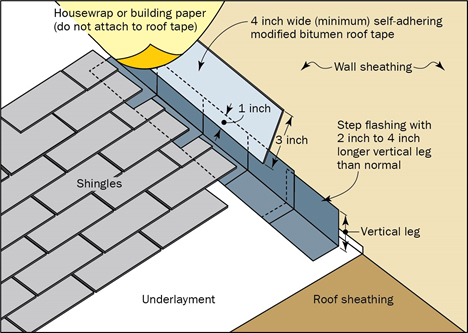Your roof protects your home from moisture, but poorly installed flashing can undermine that protection. A qualified roofing company Frederick Maryland residents rely on knows how to seal all joints and penetrations properly. The below guide will explain what flashing is, why it matters, and how to ensure it’s done right—whether you’re hiring a pro or inspecting your own roof.

What is Roof Flashing?
Roof flashing is a thin, waterproof material installed at critical points, such as chimneys, vents, skylights, and roof valleys, to carry water away and prevent leaks. Without it, moisture can seep into your home, causing wood rot, insulation damage, and costly repairs.
Each flashing is applied to a specific area on the roof. If it’s not installed properly, it cannot do its work.
Common Roof Flashing Materials
The effectiveness of flashing depends primarily on the material used. Different materials have their own unique advantages in terms of durability, climatic conditions, and budget:
- Aluminum – Lightweight, rust-resistant and commonly used in residential roofing.
- Galvanized Steel – Strong and cost-effective, coated to prevent rust.
- Copper – Highly durable, long-lasting, and perfect for high-end homes.
- Rubber/Plastic – Used for vent pipes but are less durable than metal.
The selection of material depends upon long-term performance, and an experienced roofing contractor can make a recommendation that would be most suitable for your house structure and local climate conditions.
Major Types of Roof Flashing
Flashing types may vary according to the different areas on the roof that need special flashing for total protection:
- Apron Flashing or Continuous Flashing: Long piece of flashing directing water downwards along sides of a vertical wall where the roof meets. Though effective, step flashing is normally preferred for better flexibility.
- Step Flashing: Installed in layered overlaps at roof/wall and roof/dormer junctions for movement without creating a weak, watery seal.
- Base & Counter Flashing: A two-part system used around chimneys and skylights—base flashing sits at the bottom while counter flashing covers the upper edge for a complete watertight seal.
- Drip Edge Flashing: Along roof edges it is installed in order to drive water into gutters, therefore preventing damage on the fascia and underlayment.
- Valley Flashing: In valleys or the junction where two sloping parts meet, valley flashing enables free runoff of water, eliminating chances of pool and debris collection.
- Vent Pipe Flashing: It’s a boot flashing collar which encloses around pipes with plumbing and ventilation and helps in leakage-free areas at such penetration.
- Cap Flashing: The type of flashing installed with masonry and chimneys to cover them and also has an overlapping effect at base or counter flashing.
Flashing installation that does not meet all these standards develops weak points from which leaks begin.
Why Improper Flashing Installation is a High Risk
- Leaks around chimneys, skylights, or vents.
- Water stains on ceilings and walls, indicating damage that can be hidden.
- Wood rot and weakened structures due to prolonged exposure to moisture.
- Higher energy expenses due to compromised insulation.
Flashing failures often have no sign until significant damage is visible. There should be inspection of flashing work through a qualified and trusted professional, as flashing has to be properly installed in buildings.
Why Professional Installation Is Important
While some homeowners try to DIY flashing repairs, flashing is not a one-size-fits-all component – it requires specialized knowledge of materials, placement, and waterproofing techniques. At Topper Roofing, we ensure:
- Proper material selection based on your home’s structure and climate.
- Expert installation techniques to create a tight, long-lasting seal.
- Thorough inspections to identify and fix potential weak points before they become a problem.
With decades of experience, our team guarantees that your home is well-protected against leaks and water damage.
How to Maintain Roof Flashing for Long-Term Protection
Preventative maintenance is key to ensuring your roof flashing remains effective. Homeowners can take the following steps:
- Schedule annual roof inspections to check for rust, cracks, or loose flashing.
- Ensure proper attic ventilation to reduce moisture buildup that can weaken flashing.
- Clean gutters and valleys to prevent water from accumulating around flashing.
- Address minor damage before it becomes expensive structural repair.
Even small flashing problems can lead to significant water damage if left unchecked. That is why routine inspections and maintenance are essential in protecting your home.
Topper Roofing: Your Partner for Roof Flashing Installation
Your roof is one of your home’s most valuable assets, and high-quality roof flashing is important for long-term durability. At Topper Roofing, we offer:
- Expert installation using top-quality materials.
- Comprehensive inspections to detect and prevent leaks.
- Reliable repairs and maintenance to extend your roof’s lifespan.
If you suspect an issue with your flashing—or want a professional evaluation of your roof’s condition—our team is ready to help. Contact us today to set up a consultation and keep your home protected from water damage!





